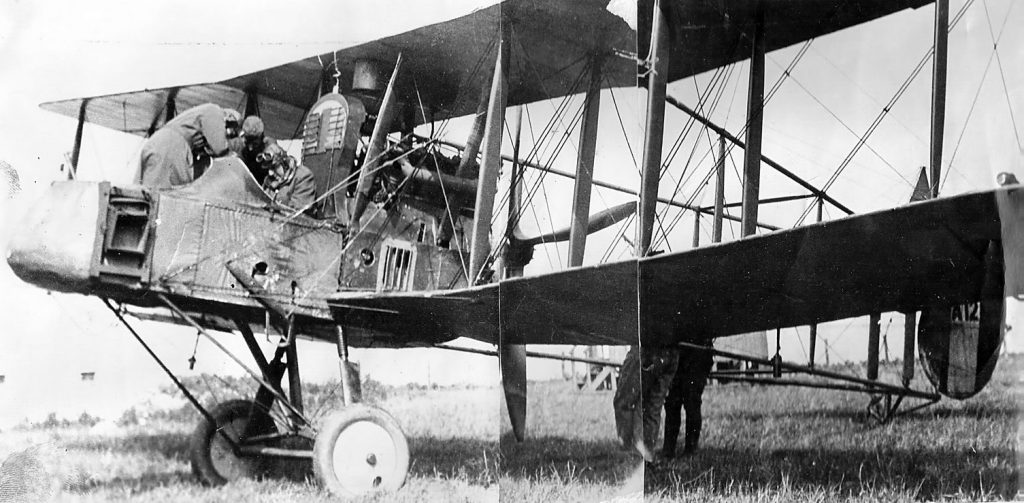The Gainsborough Heritage Centre is hosting a talk at Gainsborough House, 18 Parnell Street, DN21 2NB, Gainsborough, on Wednesday 15th February 2017 at 7.30pm. The talk will be delivered by Peter Bradshaw and will discuss a time when Zeppelins were seen over Gainsborough during the 1st World War and the role of the Royal Flying Corps in defending the realm against this new German menace.
The talk will focus on the Zeppelins which passed over Lincolnshire during World War One and the work of 33 (Home Defence) Squadron whose headquarters was in Gainsborough from the autumn of 1916.
The people of Gainsborough got used to the sound of Zeppelin engines passing overhead during the night. Throughout the country there was a dread of the risk of being killed in your own home by these terrifying new weapons. It took a while before the importance of a complete blackout was accepted. In 1915 the “Gainsborough News” regularly published lists of locals who had been fined for not observing the blackout. It was only when local towns such as Scunthorpe and Cleethorpes were bombed and there was loss of life, that local people took the blackout more seriously.
It was only after the war had ended that the “Gainsborough News,” in 1919, revealed that in the early hours of Sunday, September 3rd, 1916, the town had a very narrow escape from being bombed during a raid. The first bomb, which fell about midnight, made a huge hole in a wood at Knaith. Then lights at the works at West Stockwith attracted the Zeppelin and nine bombs were dropped, some of which did a good deal of damage to house property at East Stockwith, and shattered windows at West Stockwith. The works escaped. No one was killed but one woman in her eighties was in bed and would have been crushed by the falling roof but for the fact that one of the beams became lodged over her head. Bombs were also dropped on farm land at Morton Carr. Later Retford was bombed and the gasometers were hit – the flames from the explosion were visible in Gainsborough. Many properties in Retford were damaged and several people were seriously injured.
By the middle of 1916 criticism of the failure of the government to prevent the raids led to changes in defences. It was decided to move Home Defence Squadrons closer to the coast with the aim of intercepting the Zeppelins earlier. This led to the Headquarters of 33 Squadron being moved from Tadcaster to Gainsborough. The Royal Flying Corps took over “The Lawn,” a mansion on Summer Hill, as H.Q. and part of the Workhouse was taken over as billets for mechanics. An airfield was established just across the river from Gainsborough. Canadian officer, Lt. Arthur Menzies, wrote home to his parents describing how local people would walk across the bridge after work to watch the planes taking off.

FE2d A12 – the plane that Canadian Lt. Menzies was in when it crashed at Elsham on 25.9.17 during a Zeppelin raid. He is buried in Gainsborough
Three main airfields were established at Manton (Kirton-Lindsey), Elsham and Brattleby (Scampton). The pilots who came to the HQ at Gainsborough were from all over the Empire – Australia, Canada, New Zealand, South Africa, Argentina (not part of the Empire but it had strong links to Britain). Some of the pilots had survived action on the Western Front and were brought back to England because their experience was needed to try to combat the Zeppelin threat. Others were newly qualified pilots. But flying at night was new and was dangerous. There were numerous accidents. During the two years 33 Squadron was in Gainsborough, fourteen officers were killed. The first casualty was Canadian, Lt. Don Brophy, a very experienced pilot – against the odds he had survived for several months flying on the Western Front but was killed in a flying accident at Kirton Lindsey a month after returning to England. He is buried in the General Cemetery. None of his relations could attend his funeral. Seven other officers were buried close to him during the following months. One of these was South African officer 2nd Lt. Laurens Jacobus Van Standen, who married local woman Emmeline Beilby, on 2nd February, 1918, but only twelve weeks later was killed in a flying accident.
The cost of the talk is £4 and tea or coffee and biscuits will be available in the interval.
For more information about this talk contact the Heritage Centre via email: [email protected] or ring: 01427 610526 or visit www.gainsboroughheritage.co.uk

Comments(2)
Christine says
21st January 2017 at 6:38 pmHi Andrew, do you know where the Roses Plaque was placed. Also were l could see photos of the plaque in situ and photos of Alfred Rose.
I’m writing an essay on Rose Bros.
Thank you
Christine
Andrew Birkitt says
27th January 2017 at 9:54 amHi Christine
The blue plaque for Roses is on the corner of Market Street and Church Street on the site of where Landers used to be, not sure whats there now. I think there are photographs of Alfie Rose on the Heritage Facebook page.
Andrew
Recent posts
Events